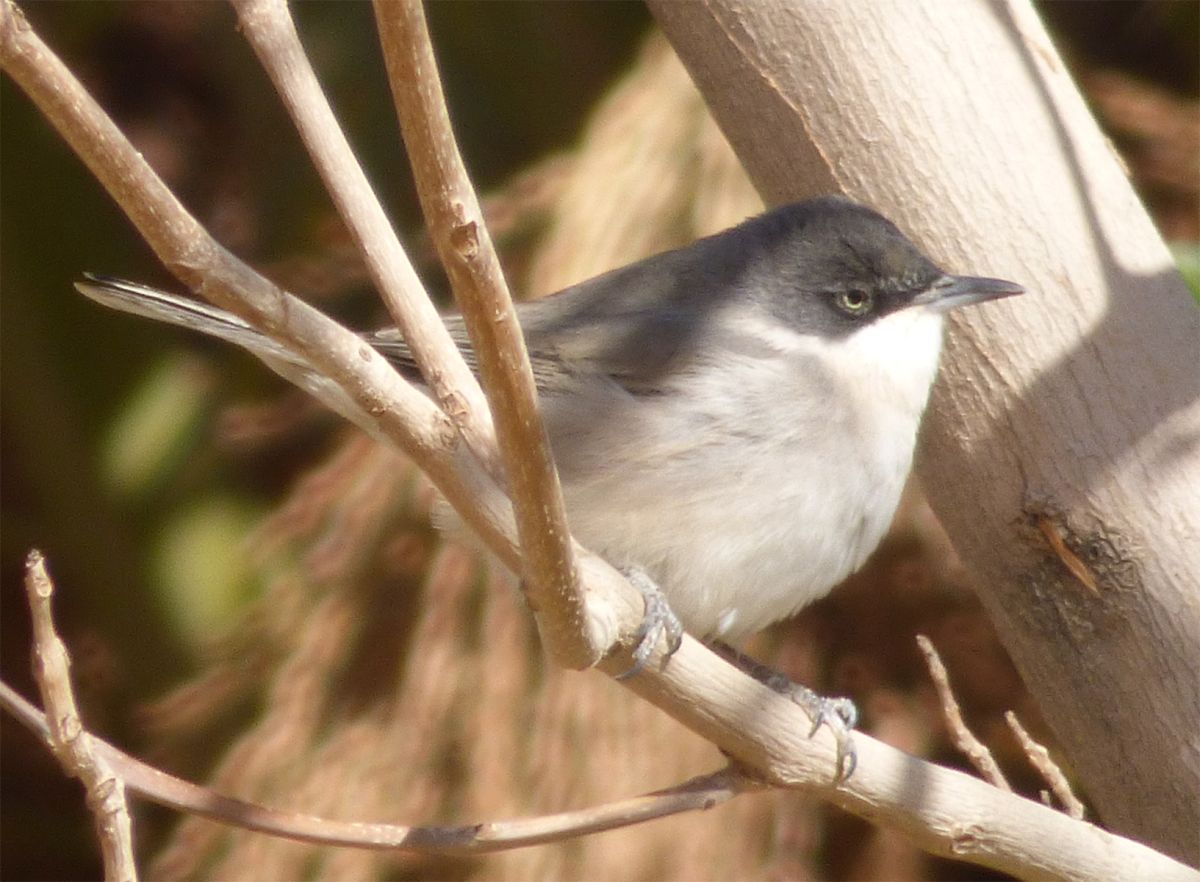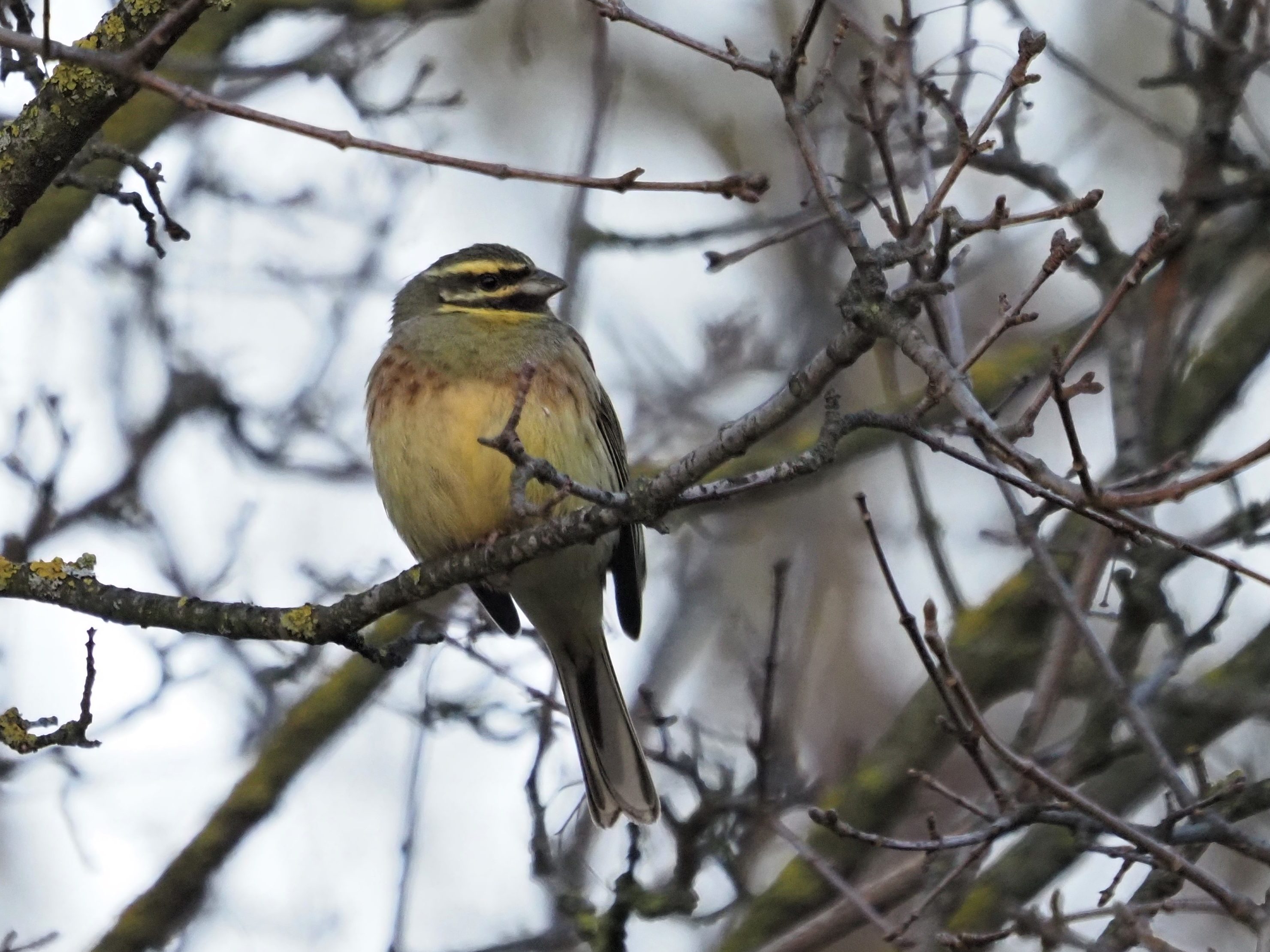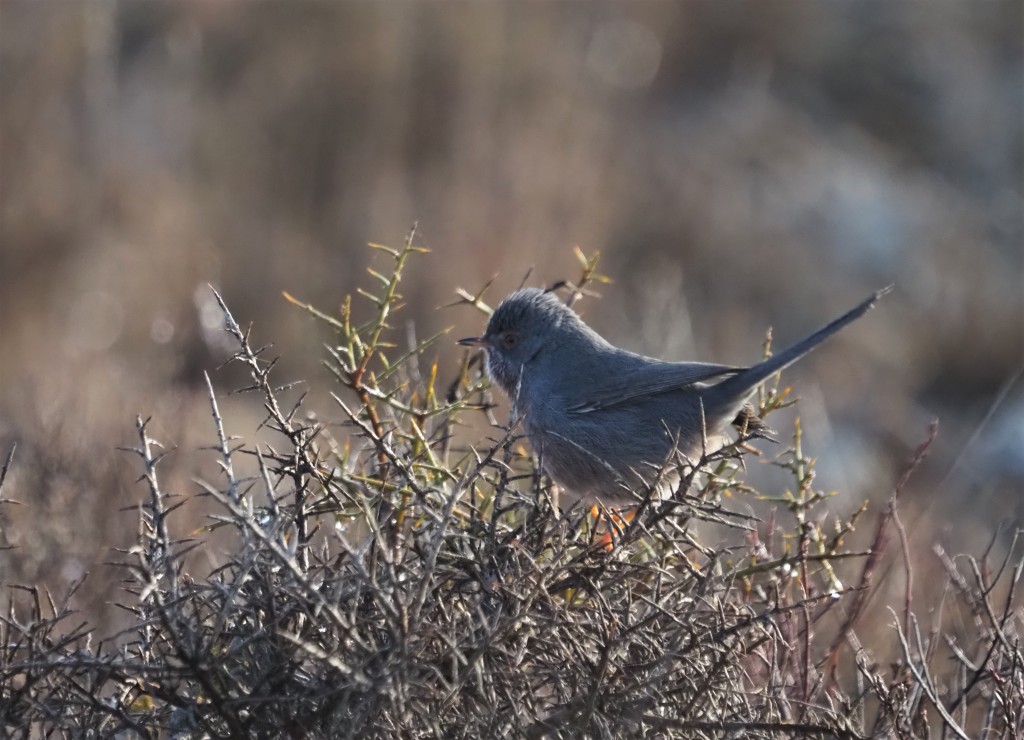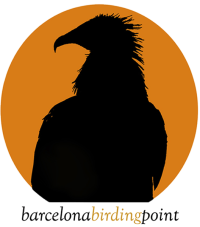Pyrenees Winter Break 2023 Trip Report

Dates: February 8th to 12th, 2023
Number of participants: 6
Number of species seen: 128
All images by tour leader Carles Oliver. All rights reserved
Overview: Our 9th Pyrenees Winter Break tour started in the Pyrenees right after a strong snow fall. During the tour the weather was sunny and not especially cold in the mountains. In the plains, we had a morning with some fog, but it didn’t stop us to find all main specialties living there.
Day 1: Once all tour participants were collected from the their accommodations around the International Barcelona Airport, a short drive lead us to the Pyrenees. Only 90 minutes away from the city and we were already in a wonderful location, a mountain range hosting all high mountain birds specialties living in the Pyrenees.
It was sunny, but the day before it had been snowing so a pair of high mountain lanes were closed during the morning. Our fist stop was dedicated to explore the meadows around Bagà, where the very first birds of the day and the trip was a Lesser Spotted Woodpecker that was hunging around the parking place. Here we had some common birds in the area including Cirl Bunting, Black Redstart, Eurasian Blue Tit and Eurasian Nuthatch. Here, the terraced landscape is fulfilled with lines of Poplars and a fast scan produced the first Iberian Green Woodpecker of the tour while was moving high in the trees. Several Common Chaffinches were around, and they all moved down to the ground to feed, followed by the Iberian Green Woodpecker.
Other birds in this first stop included European Stonechat, Meadow Pipit, Common Magpie and Eurasian Greenfinch.
After this good start we drove some miles up in a lane. Our goal was to arrive to the limit of the forest (About 1800 metres above the sea level), but we were stopped by a small flock of birds. Here we had the first Mistle Thrushes of the trip along with several Common Crossbills, Coal Tits, and Goldcrests. Still, our guests especially enjoyed the views on both Rock Buntings and European Crested Tits.
Once above the tree limit, we did another non planned stop. A gorgeous Lammergeier (aka Bearded Vulture) was sitting in the top of a rocky outcrop just beside the road, providing the group with incredible views! Common Crossbills were also around, adding with their calls a plus on the mountainous ambients of the sight. After ten minutes of observation, the Lammergeier decided to fly away, passing over the group and providing us with unforgettable memories of that moment.


From here we drove higher. Beyond the tree limit there were mixed flocks of Fieldfares and Mistle Thrushes feeding on the snowed slopes. The weather was stable, with only a brise and some scenic clouds, and many birds were taking advantage of the good weather to feed around. Here we saw more Rock Buntings and a flock of 11 Bramblings flew off from one of the last trees up the lane.
When we arrived to the mountain pass, we found chunky three birds feeding by the tarmac. 3 wonderful Snowfinches were right beside us, but unfortunately decided to flew off and down the slope. From here we decided to go for a short walk. Common Ravens were seen around, and a Peregrine Falcon appeared in a fast, low flight going down the slope in a mission. Up to 10 Eurasian Griffons were also seen exploring the thermals before a large flock of 60+ Snowfinches suddenly appeared in a small hillside some 150 metres away from us, and started feeding on the ground. We all enjoyed very much the finch spectacle with several calls, short flights and even fights. We waited a bit, not moving, and we were rewarded with the birds coming down the hillside just beside the tarmac. After 10 minutes of observation, the birds simply decided to go up the slope again, and disappeared beyond some large boulders!



Really happy after such a great sight, the group came back to the van, decided to explore that lane a bit more. Only a few miles away, a stop was made. Our short walk was again successful, as we found a lovely, obliging Alpine Accentor feeding really close to the road and, with some patience, we got some great shots on it. The views on the Accentor were perturbed by a large flock of 73 Alpine Choughs that suddenly appeared in the valley, offering good but rather distant views while a Lammergeier appeared again, crossing the valley in some seconds.
Really happy after this really successful start we went all the way down and did our way for the last stop of the day in a scrub hillside not far from our accommodation. It was already early afternoon, offering a calid light for the sightings to come. Our short walk up the hill produced some interesting sights including a large flock of Cirl Buntings feeding on the ground along with 2 Woodlarks, 4 Rock Buntings, 2 Redwings, 14 Rock Sparrows and the firsts Iberian Grey Shrike of the trip. In the skies, several Red Kites were moving around and we counted 3 Griffons Vultures and 1 adult Lammergeier. Here we also had the only Citril Finch of the trip, unfortunately a flying bird that provided poor views.
After this stop we just drove the short distance to our accommodation.
Day 2. After enjoying a lovely breakfast we left our accommodation. The first stop of the day was devoted to explore a lovely corner of the Segre River that crosses the beautiful Cerdanya valley. Here we enjoyed White-throated Dippers, Cirl Buntings, many Redwings and 2 Bramblings among several Chaffinches. Here we also had an Eurasian Woodcock that flew off from a nearby meadow, an uncommon bird to have here in day light!
From here we went up in the forested slopes, to spend some time in a boreal forest. As usual, the area was quite full of activity and it didn’t take us long to enjoy good views on Short-toed Treecreeper, Goldcrest, European Crested Tit, Firecrest and Coal Tit but also Common Crossbill, Goldfinch and Greenfinches. But the most celebrated sight here was a Black Woodpecker moving really low in a pine tree that offered us lovely scope views.
Happy after this lovely views we drove up to Andorra. During the hour long drive, a pair of stops were necessary to enjoy both Lammergeier and Golden Eagle. Once in Pas de la Casa we had a stop for a coffee while enjoying the urban Alpine Choughs that live around the sky resort. By the time of our arrival it was snowing a bit, providing the sight with a wonderful alpine setting!


From here we drove back to Catalonia to have a final stop in the large fields that are the core of the Cerdanya Valley. There we enjoyed large flocks of Eurasian Skylarks, several flocks of Cirl & Rock Buntings, Meadow Pipits, Linnets and Corn Buntings but also the only 2 Hen Harriers of the tour, including a lovely male.
Day 3. Transfer to a different section of the Pyrenees. We drove West for about 90 minutes before to arrive into a small gorge in a secondary road. This was our first attempt to find a Wallcreeper, and we didn’t have to wait long! We waited for the bird in a small, old bridge, and only a few minutes after we got out of the vehicle, a wonderful Wallcreeper right in front us, providing excellent views for some minutes. The bird, always in search of insects that look for shelter in the rocky crevices, started to climb up the wall and we could follow its itinerary for several minutes. It kept doing short flights, and flickering its wings to show out its wonderful red panels (a way to keep other Wallcreepers away from that cliff).
Here we also had other interesting birds living in the cliffs including Blue Rock Thrush and Crag Martin. The Wallcreeper, after showing out for about 15 minutes, finally disappeared behind a rock, and this was the time for us to move to our next stop.

Leaving the hills behind, we drove to one of the few corners around Lleida where traditional wheat farming is still dominant. These areas host an abundant birdlife, and the number and variety of birds of prey is quite stunning. It didn’t take long before we had several views on Western Marsh Harriers, Red Kites and also Common Buzzards, some Griffons, Eurasian Sparrowhawk and even 2 Goshawks. All of this before the real goal of this stop appeared in one of its preferred trees: the long-staying Long-legged Buzzard! This bird of prey, nesting from Bulgaria to the East until the Arabian Peninsula, is a huge rarity in Catalonia and always worth a visit! This time we had excellent scope views, and also the chance to compare the size of this large Buzzard with a much smaller Western Marsh Harrier that was perched in a tree next to the Buteo hawk.
A small flock of Little Bustards had been some weeks feeding in a field nearby, and we covered the short distance to enjoy lovely scope views of 7 of this endangered bird, another victim of the farming intensification in Europe.
From this place we drove East to explore some of the dry canyons immediately South of Lleida. A pair of stops here allowed us to enjoy not only Stock Doves, Red-billed Choughs and Little Owl, but also on the scarce Black Wheatear. Here, between the abandoned terraces and the small cliffs of these canyons we were lucky enough to find a female Eurasian Eagle Owl hatching on its nest! A wonderful sight to end the third day of the tour!


Day 4. Early start to explore the massive steppe lands South & West of Lleida. On the contrary of the previous day, the morning was foggy around the city so we decided to go up to the highlands West of Lleida to try to scape the fog. And we did it, partially.
As soon as arriving to the steppes we enjoyed large flocks of Corn Buntings but also Calandra & Mediterranean Short-toed Larks. They were feeding on the ground along with Common Linnets, Meadow Pipits and Goldfinches. It was sunny, but the fog was not far away and it was moving our way, so we didn’t have a lot of time!
We were lucky and 4 Black-bellied Sandgrouses flew off from a nearby field, allowing great flight views and nice photo opportunities. We scanned in different fields looking for Pin-tailed Sandgrouse, but we were unsuccessful. Finally, we decided to move to lower area to keep scanning. A pair of stops were necessary to enjoy Iberian Grey Shrikes and Thekla’s Larks and by we arrived to the new location the fog started catching us up. It was a pity because at soon as we arrived a flock of 14 Black-bellied Sandgrouse flew off from the field, but 8 more remained. A fast scan in the place allowed us to find 12 Pin-tailed Sandgrouses, some of them really close to us and the fog allowed great scope views despite it ruined the photo chances of the moment.



Decided to escape the fog, we drove East to check another place in Los Monegros. There, around Bujaraloz, we went in the search of the small population of Great Bustards that subsists in the area. Here it was sunny and it only took us 5 minutes to find a lovely flock of 17 males walking around in a wonderful field full of flowers. After enjoying this great birds we took our time to check a pair of corners around, where we found more Pin-tailed Sandgrouses but also Merlin and 1 Golden Eagle.
It was already lunch time so we covered the short distance to a small lagoon. From its view point we had a good selection of waterfowl that included Little & Great Crested Grebes, Gadwall, Eurasian Teals, Common Pochards, Shovelers, 5 Red-crested Pochards and 1 male Pintails. The reedbeds around were having some Great White Egrets and Grey Herons and a short walk by reed produced Penduline Tits, ruff views on an elusive Cetti’s Warblers, several Reed Buntings and a shy Bluethroat that not allowed any photo. The fields around were having large flocks of Chaffinches and we were happy to pick up a Brambling from there as well!
From here we had a final stop in a different wetland very close to Lleida, where the fog was still persistent. Here we had short walk along the reeds. It was little movement, but finally our perseverance was rewarded with good views on 2 Bearded Tits that appeared really close in the reeds. They were really celebrated by the tour participants, and the afternoon ended with 2 Common Kingfishers chasing each other in the fog!

Day 5. Last morning of the trip before heading back to Barcelona Airport. This morning was devoted to explore the wonderful habitat of low, sparse scrubland where the poor understood Dupont’s Lark lives. This species is to be found in poor soils with a rich gradient of salt on it, resulting a landscape of low, scattered scrubs. The songs of both Calandra & Mediterranean Short-toed Larks were constant in the air. The morning was sunny, and the temperature was higher than the day before. We spend some time exploring the area by combining short walks and slow drives, and after less than hour we were enjoying a Dupont’s Lark while feeding on the ground. It was interesting to see the bird excavating the soil with powerful movements of its whole body, pushing its long bill into the soft soil to get a small prey before starting its short, fast runs between the tussocks of grass.


This was quite a phenomenal way of ending our tour. After this we just drove back to Barcelona, where we had a final stop around the airport to enjoy Iberian Green Woodpeckers, Eurasian Hoopoes, Zitting Cisticola and a rather unexpected light form Booted Eagle!
List of birds seen:
- Mute Swan (Cygnus olor)
- Northern Shoveler (Spatula clypeata)
- Gadwall (Mareca strepera)
- Mallard (Anas platyrhynchos)
- Northern Pintail (Anas acuta)
- Eurasian Teal (Anas crecca)
- Red-crested Pochard (Netta rufina)
- Common Pochard (Aythya ferina)
- Tufted Duck (Aythya fuligula)
- Red-legged Partridge (Alectoris rufa)
- Little Grebe (Tachybaptus ruficollis)
- Great Crested Grebe (Podiceps cristatus)
- Feral Pigeon (Columba livia sp)
- Stock Dove (Columba oenas)
- Common Woodpigeon (Columba palumbus)
- Eurasian Collared Dove (Streptopelia decaocto)
- Pin-tailed Sandgrouse (Pterocles alchata)
- Black-bellied Sandgrouse (Pterocles orientalis)
- Great Bustard (Otis tarda)
- Little Bustard (Tetrax tetrax)
- Water Rail (Rallus aquaticus) – heard only
- Eurasian Moorhen (Gallinula chloropus)
- Eurasian Coot (Fulica atra)
- Stone Curlew (Burhinus oedicnemus)
- European Golden Plover (Pluvialis apricaria)
- Northern Lapwing (Vanellus vanellus)
- Common Snipe (Gallinago gallinago)
- Green Sandpiper (Tringa ochropus)
- Black-headed Gull (Chroicocephalus ridibundus)
- Yellow-legged Gull (Larus michahellis)
- White Stork (Ciconia ciconia)
- Great Cormorant (Phalacrocorax carbo)
- Grey Heron (Ardea cinerea)
- Great White Egret (Ardea alba)
- Little Egret (Egretta garzetta)
- Western Cattle Egret (Bubulbus ibis)
- Bearded Vulture – Lammergeier (Gypaetos barbatus)
- Eurasian Griffon (Gyps fulvus)
- Golden Eagle (Aquila chrysaetos)
- Booted Eagle (Aquila pennata)
- Western Marsh Harrier (Circus aeruginosus)
- Hen Harrier (Circus cyaneus)
- Eurasian Sparrowhawk (Accipiter nisus)
- Northern Goshawk (Accipiter gentilis)
- Red Kite (Milvus milvus)
- Common Buzzard (Buteo buteo)
- Long-legged Buzzard (Buteo rufinus)
- Eurasian Woodcock (Scolopax rusticola)
- Eurasian Eagle Owl (Bubo bubo)
- Little Owl (Athene noctua)
- Eurasian Hoopoe (Upupa epops)
- Common Kingfisher (Alcedo atthis)
- Black Woodpecker (Dryocopus martius)
- Great Spotted Woodpecker (Dendrocopos major)
- Lesser Spotted Woodpecker (Dendrocopos minor)
- Iberian Green Woodpecker (Picus sharpei)
- Common Kestrel (Falco tinnunculus)
- Merlin (Falco columbarius)
- Peregrine Falcon (Falco peregrinus)
- Iberian Grey Shrike (Lanius meridionalis)
- Eurasian Jay (Garrulus glandarius)
- Common Magpie (Upupa epops)
- Red-billed Chough (Pyrrhocorax pyrrhocorax)
- Alpine Chough (Pyrrhocorax graculus)
- Western Jackdaw (Corvus monedula)
- Carrion Crow (Corvus corone)
- Common Raven (Corvus corax)
- Calandra Lark (Melanocorypha calandra)
- Dupont’s Lark (Chersophilus duponti)
- Mediterranean Short-toed Lark (Alaudala rufescens)
- Woodlark (Lullula arborea)
- Eurasian Skylark (Alauda arvensis)
- Thekla’s Lark (Galerida theklae)
- Crested Lark (Galerida cristata)
- Eurasian Crag Martin (Ptynoprogne rupestris)
- Coal Tit (Periparus ater)
- European Crested Tit (Lophophanes cristatus)
- Eurasian Blue Tit (Cyanistes caeruleus)
- Great Tit (Parus major)
- Eurasian Penduline Tit (Remiz pendulinus)
- Long-tailed Tit (Aegithalos caudatus)
- Eurasian Nuthatch (Sitta europaeus)
- Wallcreeper (Tichodroma muraria)
- Short-toed Treecreeper (Certhia brachydactyla)
- Eurasian Wren (Troglodytes troglodytes)
- White-throated Dipper (Cinclus cinclus)
- Goldcrest (Regulus regulus)
- Firecrest (Regulus ignicapillus)
- Cetti’s Warbler (Cettia cetti)
- Zitting Cisticola (Cisticola juncidis)
- Common Chiffchaff (Phylloscopus collybita)
- Eurasian Blackcap (Sylvia atricapilla)
- Sardinian Warbler (Curruca melanocephala)
- Dartford Warbler (Curruca undata)
- European Robin (Erithacus rubecula)
- Bluethroat (Luscinia svecica)
- Black Redstart (Phoenicurus ochruros)
- Blue Rock Thrush (Monticola solitarius)
- European Stonechat (Saxicola rubicola)
- Black Wheatear (Oenanthe leucura)
- Mistle Thrush (Turdus viscivorus)
- Song Thrush (Turdus philomelos)
- Redwing (Turdus iliacus)
- Fieldfare (Turdus pilaris)
- Common Starling (Sturnus vulgaris)
- Spotless Starling (Sturnus unicolor)
- Alpine Accentor (Prunella collaris)
- Grey Wagtail (Motacilla cinerea)
- White Wagtail (Motacilla alba)
- Meadow Pipit (Anthus pratensis)
- Common Chaffinch (Fringilla coelebs)
- Brambling (Fringilla montifringilla)
- Hawfinch (Coccothraustes coccothraustes)
- Eurasian Greefinch (Chloris chloris)
- Common Linnet (Linaria cannabina)
- Common Crossbill (Loxia curvirostra)
- Eurosasian Goldfinch (Carduelis carduelis)
- Citril Finch (Carduelis citrinella)
- European Serin (Serinus serinus)
- Eurasian Siskin (Spinus spinus)
- Corn Bunting (Emberiza calandra)
- Rock Bunting (Emberiza cia)
- Cirl Bunting (Emberiza cirlus)
- Yellowhammer (Emberiza citrinella)
- House Sparrow (Passer domesticus)
- Eurasian Tree Sparrow (Passer montanus)
- Rock Sparrow (Petronia petronia)
- Snowfinch (Montifringilla nivalis)

